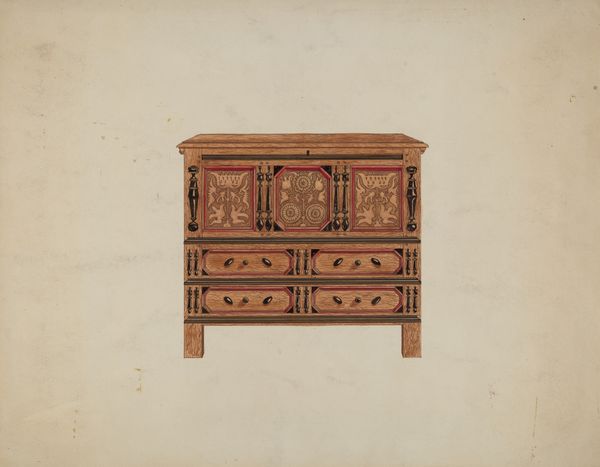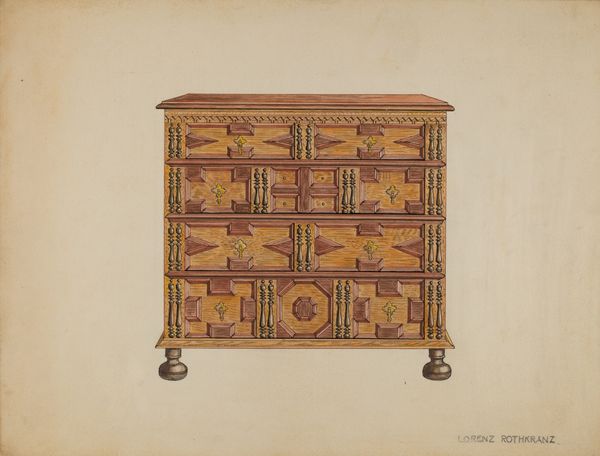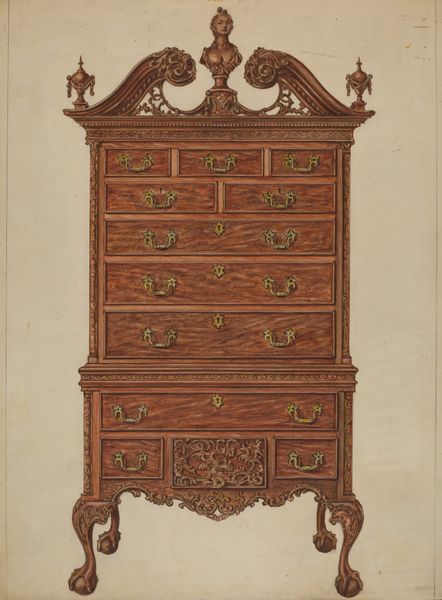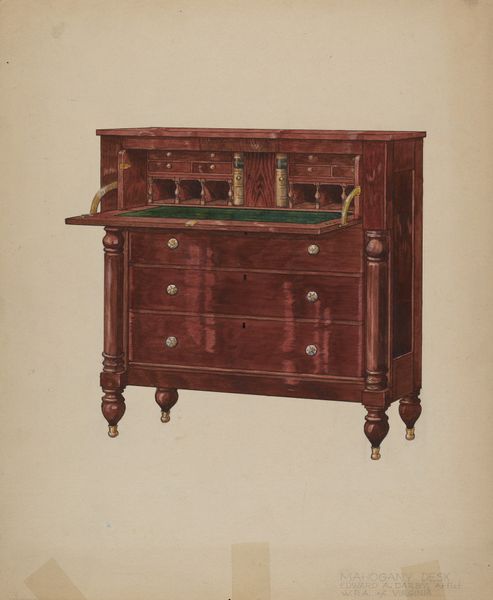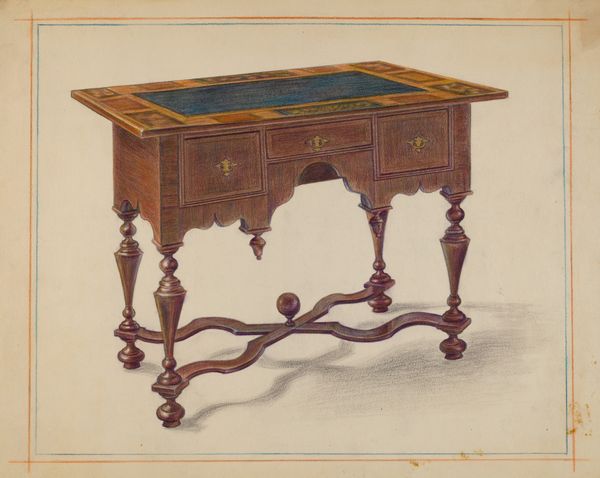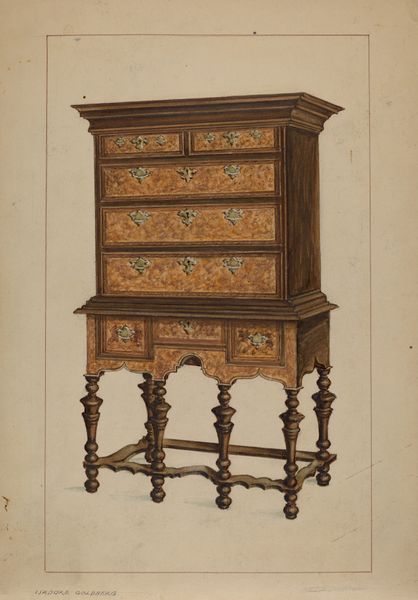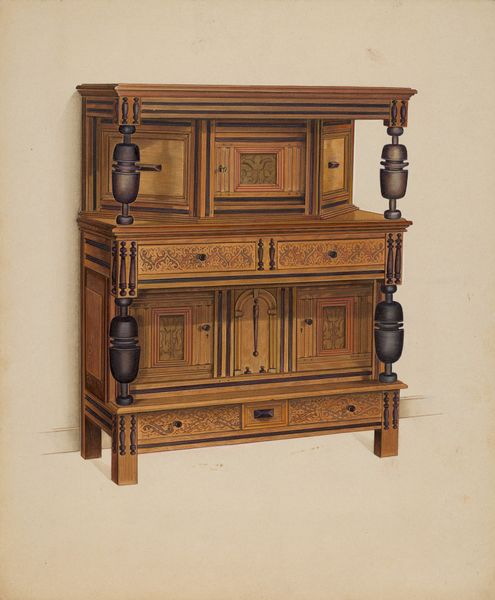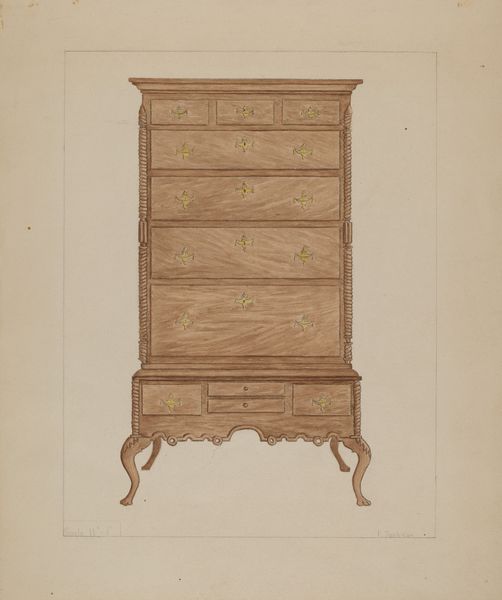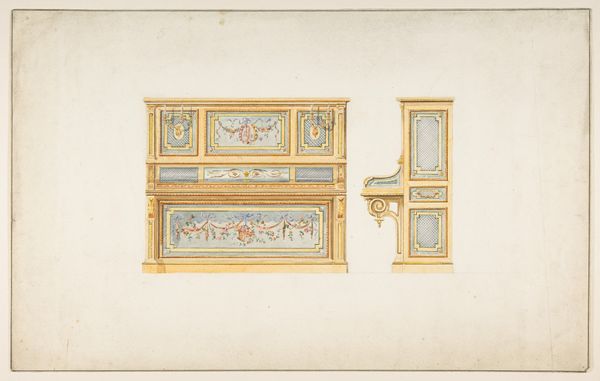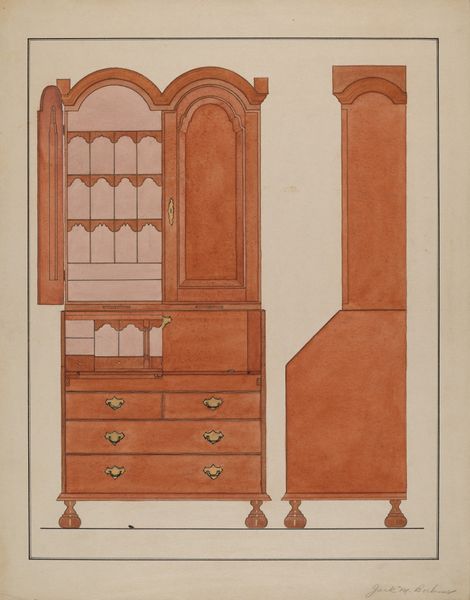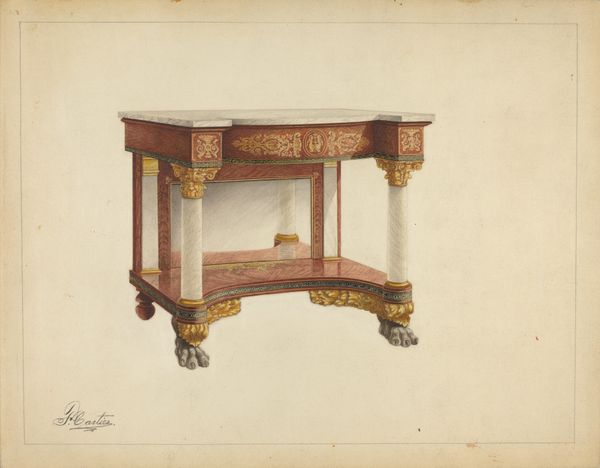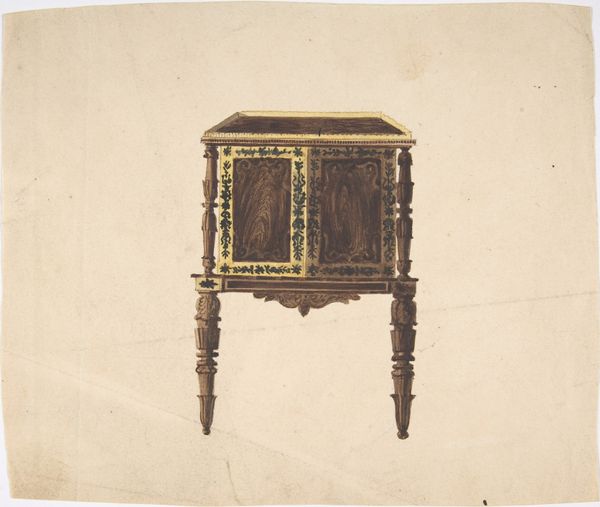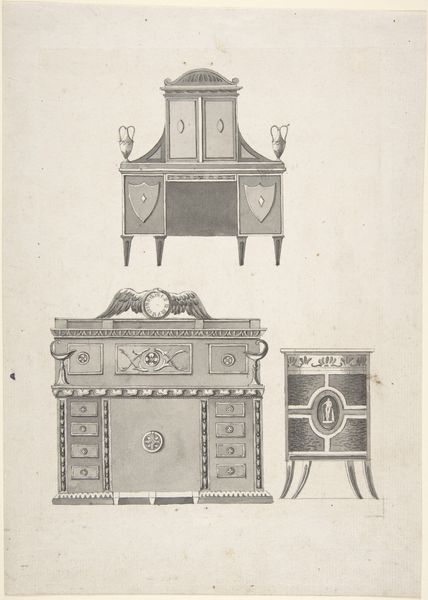
drawing, print, watercolor
#
drawing
#
neoclacissism
# print
#
watercolor
#
geometric
#
watercolour illustration
#
decorative-art
Dimensions: sheet: 9 15/16 x 16 1/8 in. (25.3 x 41 cm)
Copyright: Public Domain
Curator: Before us we have a drawing entitled “Design for a Piano,” created by an anonymous artist in the 19th century. The piece is a print enhanced with watercolor and resides here at the Metropolitan Museum of Art. Editor: It strikes me as quite restrained, almost severe, despite the decorative elements. The geometric forms dominate, presenting a very formal and, dare I say, cold interpretation of a musical instrument. Curator: I’m intrigued by that assessment. Focusing on the composition, one can observe how the artist employed neoclassicism’s penchant for symmetry and order. The color palette, though muted, accentuates the structured layout with an almost architectural rigor. Editor: Precisely, and this very restraint speaks volumes about the period. Consider the social function of a piano in the 19th century. It was an instrument of bourgeois domesticity, particularly for women, serving to mark the social and cultural status of the household, a site of both artistic expression and gendered expectations. The rendering here feels aligned with the conservative patriarchal roles of this period. Curator: That is an insightful reading. Still, observing the use of geometric shapes, we see an attempt to synthesize functionality and aesthetic principles. The artist uses proportion and shape to craft a visual object with strong aesthetic appeal, even as the instrument is presented flatly, without any real perspective, as we see with similar drawings of furniture of that time. Editor: Indeed, though for whom was the intended audience? This design, presented so starkly, arguably reveals more about the constraints placed upon the female musicians who would have played it, hinting at themes of restricted creativity and regulated emotion. Curator: The use of watercolor softens the print just so slightly, and it leads one to ask more formal questions. Are the decorative elements carefully planned to lead the eye, to direct it? Editor: The fact it remains anonymous speaks to an entire world of undervalued craftspeople and designers, largely absent from the grand narratives of art history, where labor and class dynamics dictate who gets remembered and canonized. Curator: A stimulating point. Focusing on the artwork’s intrinsic qualities, it allows me to appreciate its geometrical precision and measured decorative impulse, elements that might well point to the dawn of design as an art form in its own right. Editor: But for me, recognizing it as part of a larger socio-cultural moment compels one to explore these issues of labor and value within a gendered economy.
Comments
No comments
Be the first to comment and join the conversation on the ultimate creative platform.
